Looking to check out cities with bustling streets and cool cafes? Then include Hanoi and Ho Chi Minh City in your itinerary. More interested in the outdoors, trekking and diving? Then don’t miss Sapa, Nha Trang, and Ha Long Bay. Or are you looking for a bit of everything and really want to get to know the country and its greatly varying regions, people, food, and customs? Then this guide is for you.
Below, we outline the top places to visit and explore in Vietnam, and what there is to see, do and eat there. Read on to find out about the best destinations for you and get links to more of our articles that go into further detail about each one. Do you have your pen and paper ready to draft your itinerary?
The North of Vietnam
Northern Vietnam is characterized by its unique landscapes of rugged mountains, rolling hills, and incomparable coastlines. Be prepared for some breathtaking scenery including never-ending rice paddies, winding hill roads, and dramatic vistas of islands dotting a perfectly blue sea. In stark contrast to that, you’ll find Hanoi, a noisy, crowded city that might look a bit rough on the surface but is chock-full of creative spaces, historical landmarks, and excellent coffee shops waiting to be discovered.
Hanoi – Vietnam’s Capital
Known as the cultural center of Vietnam, Hanoi is a great place to start. Its many historical sights, parks, small alleyways full of fragrant street food stalls, and coffee vendors are the best places to get an idea of the life and style of the country. Spend around two to three days here to learn about Vietnam’s interesting history, try delicious local specialties and explore the buzzing art and design scene.
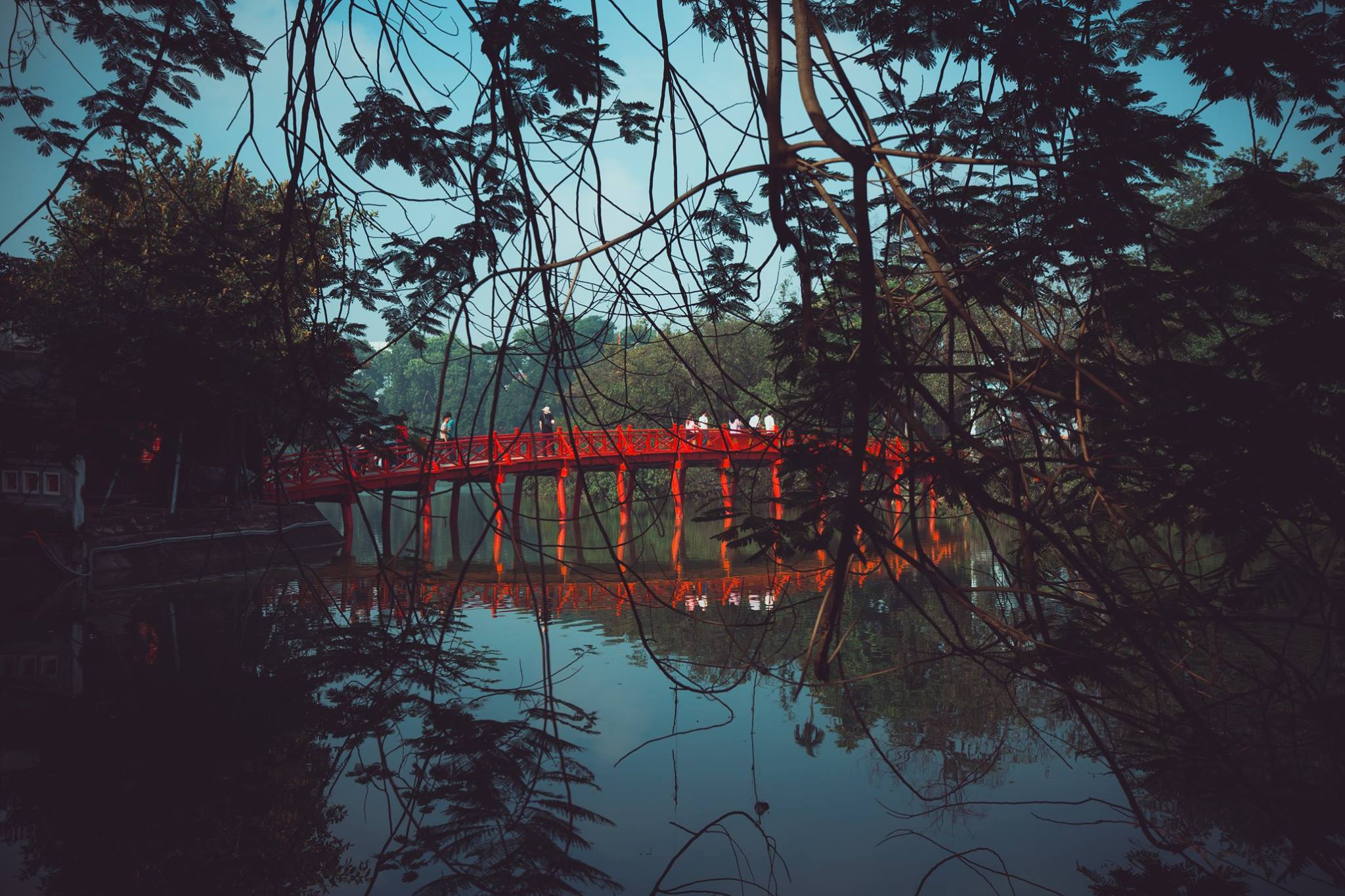
Hanoi by Trung NghiaWander around the famous Old Quarter, discover the colonial heritage and end the day on a tiny plastic stool in one of the city’s famed outdoor “bars” with some cheap, local beer. We’ve created an overview of how best to spend two days in Hanoi, so check it out if you’re already planning your trip. For more inspiration, we also have a guide to socially responsible traveling in Hanoi as well as a list of cool places to stay. Finally, if you want a more comprehensive guide to what lies in the North, check out this article on Hanoi and Beyond and here are some must-try dishes, the breakfast edition.
Ha Long Bay – A Natural World Wonder
Once you’ve seen Hanoi and had enough of its noise, pollution and the frenetic pace, it’s time to head to one of the world’s seven natural wonders: Ha Long Bay. Just a few hours by bus or car from the capital, this is an absolute must-see. With its hundreds of small overgrown karsts and lush, green islands strewn about in tranquil, azure waters it’s a place unlike any other in the world.
When planning your trip to the bay, you can choose from several ways to get there and a few different places to start your tour. The best and most recommend is to go to Haiphong City, then to Cat Ba Island and catch a cruise there. That way you are more likely to avoid tourist traps and rip-offs.

Plan at least two days so you can enjoy a cruise out to the more remote areas of the bay, away from all the touristy spots and the single day tours. Know that there are many tour options ranging from budget to luxury, so do your research carefully to find one that fits your style. We’ve prepared a detailed article about how to do Ha Long Bay right as well as a post highlighting the best islands to visit in both Ha Long Bay and the neighboring Lan Ha Bay so be sure to check them out.
Sapa – Vietnam’s Most Famous Hill Station
Another unique spot to visit while you’re in the North is Sapa, a former hill station turned world famous trekking destination. Located in a mountainous region, Sapa is covered in dense forests and inhabited by local hill tribes known for their colorful ethnic clothing and their traditional lifestyle.
To give you the most important basic information about Sapa, we’ve put together an article highlighting how to get there and what to watch out for when booking your homestay (the absolute best way to experience this place). Since there are so many operators and homestay hosts to choose from, we’ve created a list of our favorite ones to save you some time and energy.
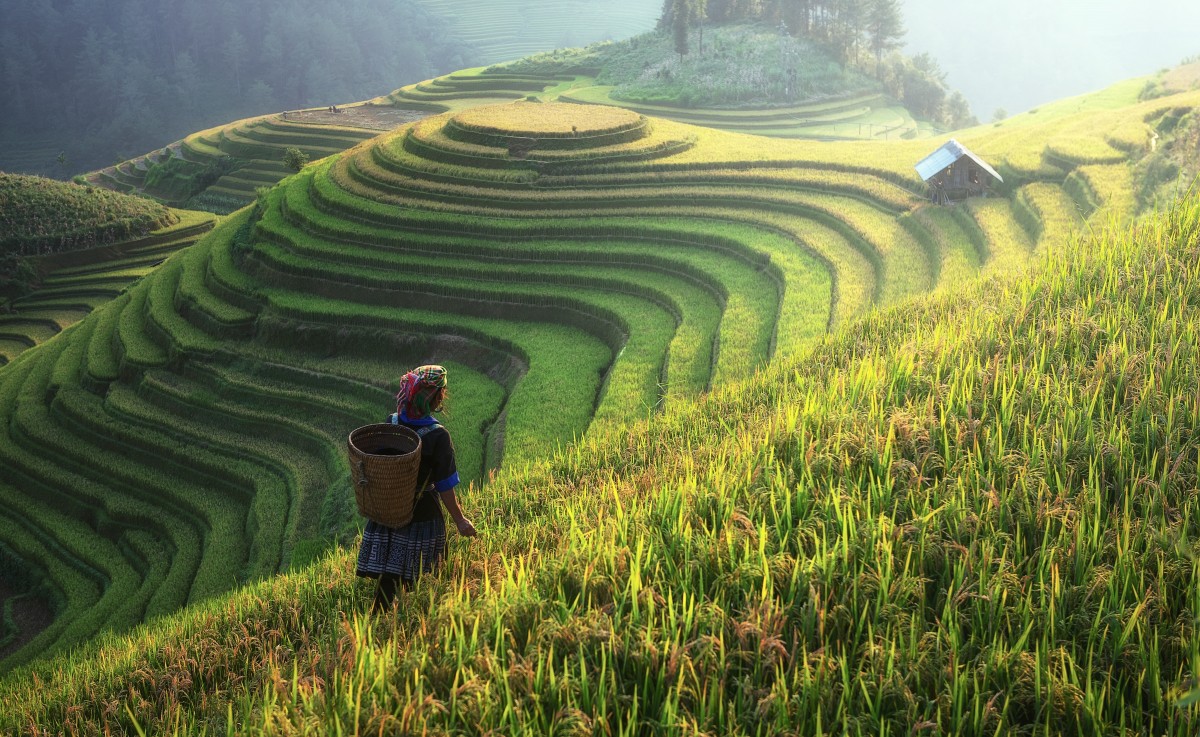
If you’re a serious trekker, you might want to plan an extra day to climb Mount Fan Si Pan, Vietnam’s highest peak. We also have a comprehensive trekking guide to all of Sapa coming soon. That’s not your thing? Then spend some time exploring local markets to learn about local handicrafts and buy beautiful souvenirs. There is going to be a guide to finding the most authentic markets with the best deals so you can skip the tourist traps and go for the real thing.
What to Eat in Northern Vietnam
Every region of Vietnam has a distinctly different cuisine and there are some dishes that are particular to a certain area and might be harder to find somewhere else. With Hanoi, the country’s cultural capital being in the north, this area is also home to many foods that Vietnam is famous for around the world. In this area, you will find dishes that are well-balanced and not too strong. As you head further south, you will notice a change slowly but surely.
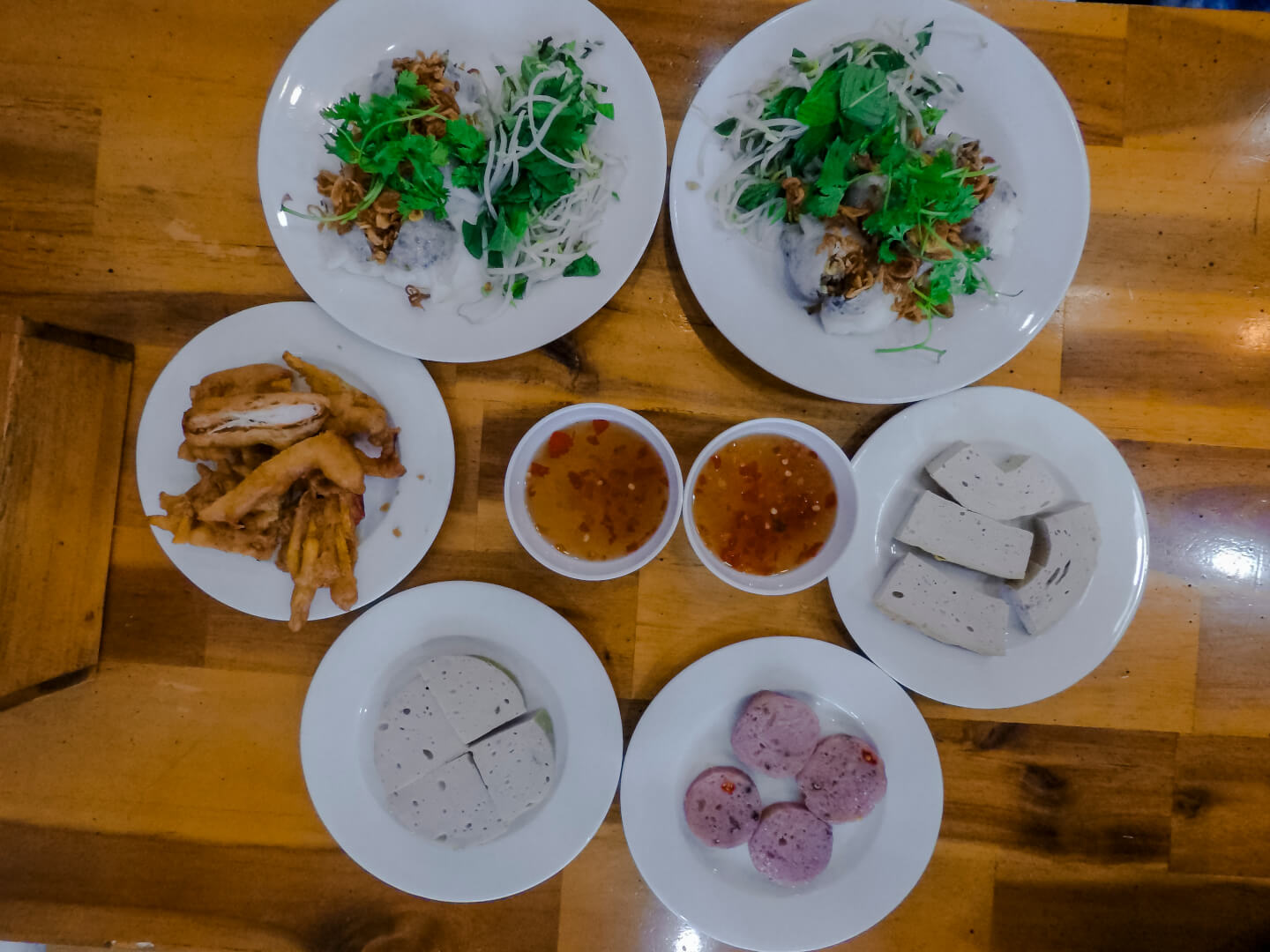
Get ready to wow your taste buds with the likes of banh cuon (rice noodles filled with pork and mushrooms), bun rieu (crab noodle soup), bun cha (char-grilled pork patties with herbs), and of course pho (rice noodle soup with pork or beef), the de facto national dish of Vietnam. When you head out to Ha Long Bay, of course, you will find a plethora of local seafood including various kinds of clams, snails, and prawns, all deliciously prepared. And don’t forget Sapa! The hill tribes prepare many foods that are quite distinct from what you’ll get in the rest of Vietnam, so be sure to give them a try.
Central Vietnam
As you head down to central Vietnam, you will notice a change in both the landscape and climate. Influenced by the tropical monsoon, this area experiences all four seasons, with springtime being the best period to visit due to its mild, sunny weather. Central Vietnam is home to some wonderful scenery as well as impressive historical sites, and of course, there is more delicious food to try.
Hue – The Imperial City
Whether or not you’re a history buff, Hue is a city which deserves a spot on your itinerary. Its most important site, the Forbidden City, is where the emperors used to live, and it will take you back to a time when Vietnam was run by a long line of powerful monarchs. Around the city and dotting the shores of the Perfume River, you will find the tombs of these rulers, some of which are richly decorated and surrounded by expansive gardens.
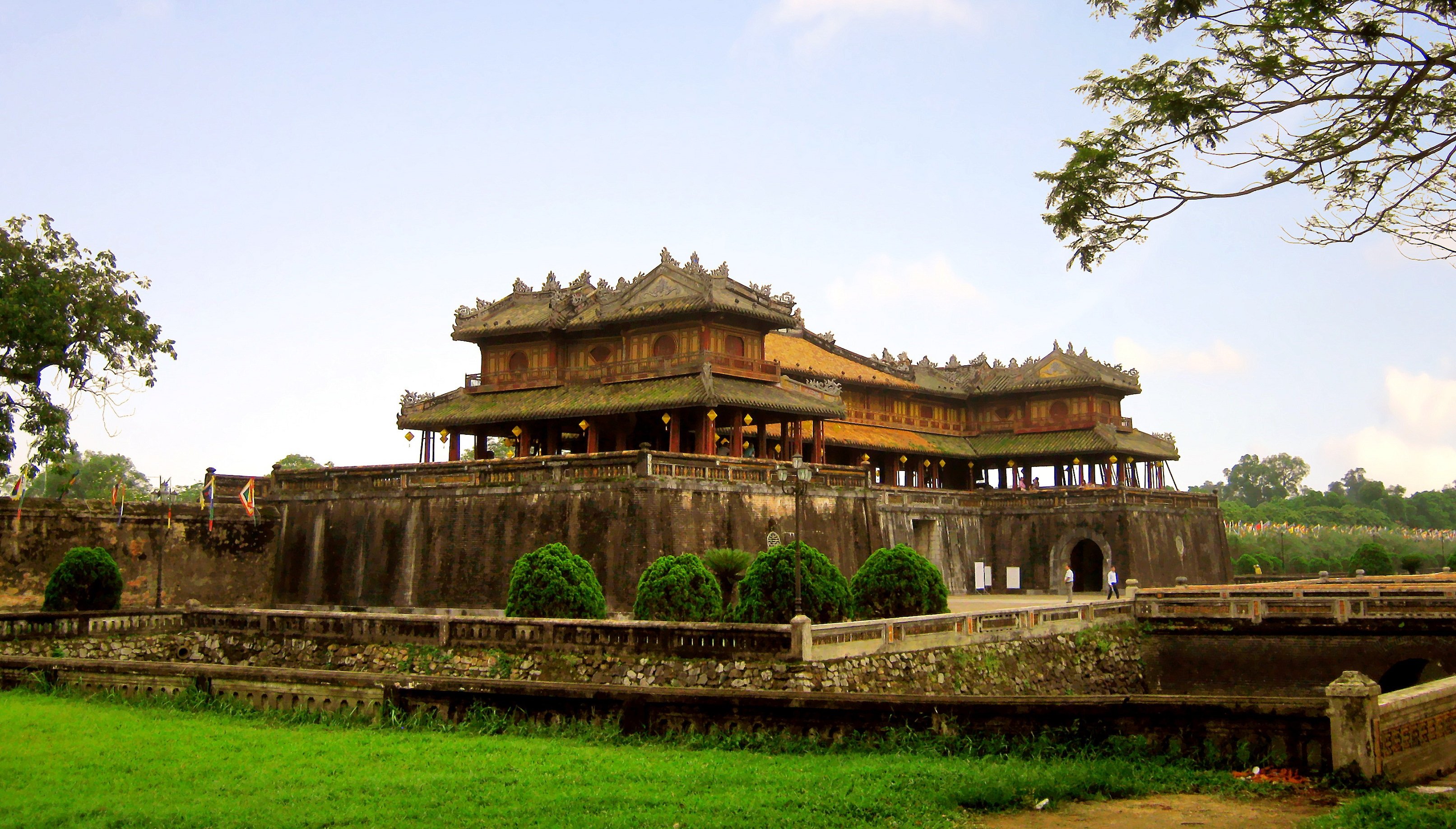
When you’re planning your time in Hue, make sure to do some research on how to get around. As the sights are quite spread out, it would be best to rent a motorbike or hire a driver to make sure you see everything you want. If you have some extra time and are into exploring some hidden spots other tourists don’t know about, click through to our post about off the beaten track things to see and do in Hue.
Hai Van Pass – A Road Through the Clouds
When heading from Hue to Danang (or vice versa), there are several options, but doubtless the most scenic and impressive is the Hai Van Pass. This “pass of sea and clouds” goes right along the coastline and offers scenic views of the bay below.
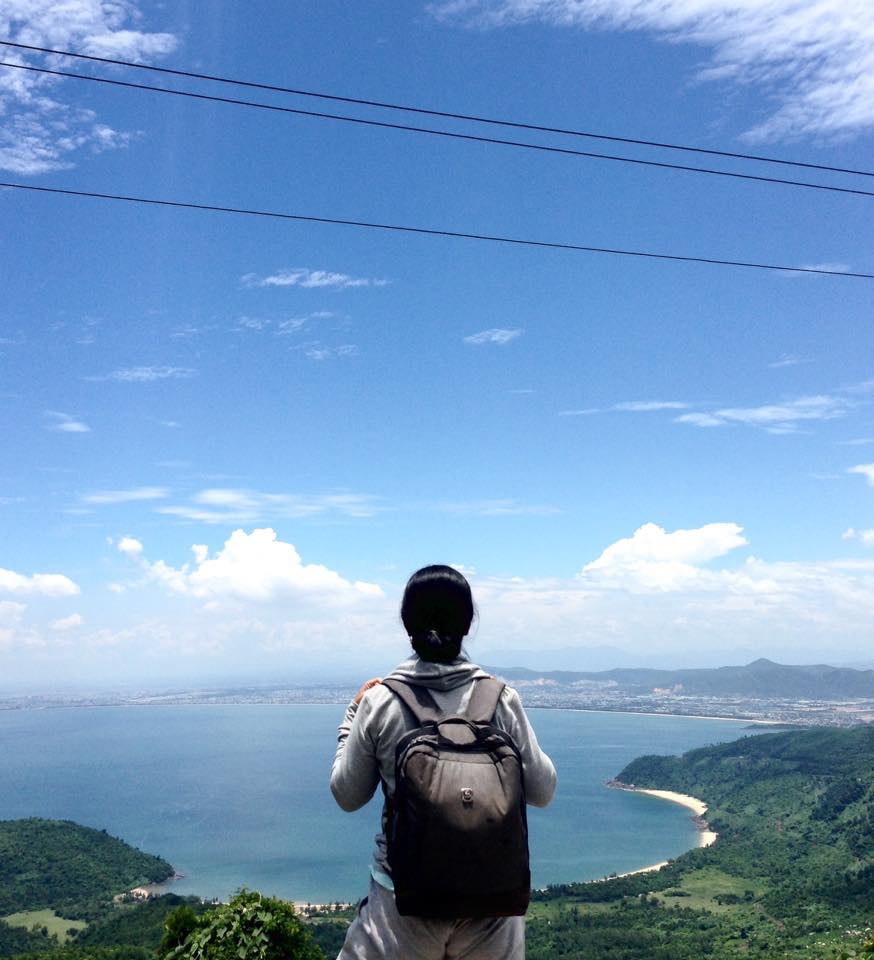
To make the most of this trip, get a driver to show you the best places to stop (tip: Turtle Rock and a traditional fish sauce factory). If you feel like going with a group, there are plenty of operators that organize day-trips too. These tours usually include stops at the best viewpoints as well as a delicious meal of local specialties and maybe even a trip to a waterfall to wash off the dust of the road at the end of your ride.
Why are we recommending you go on a tour or with a driver? Hai Van Pass is a steep serpentine road known for its mystical yet often thick fog and sudden weather changes that might surprise you if you’re unfamiliar with this area. In the past, a lot of accidents happened on this road, and although it has been made safer, inexperienced drivers are still advised against going on their own.
Danang – The Pearl by the Sea
Want to chill out by the beach for a day or two and work on that tan? Then Da Nang is your go-to destination. Located right on the water and with a plethora of hotels, hostels, guest houses and homestays to choose from, this place offers something for every budget. Find one you like and then head out to explore hidden beaches, small islands, and go for a dive or a kayak tour.
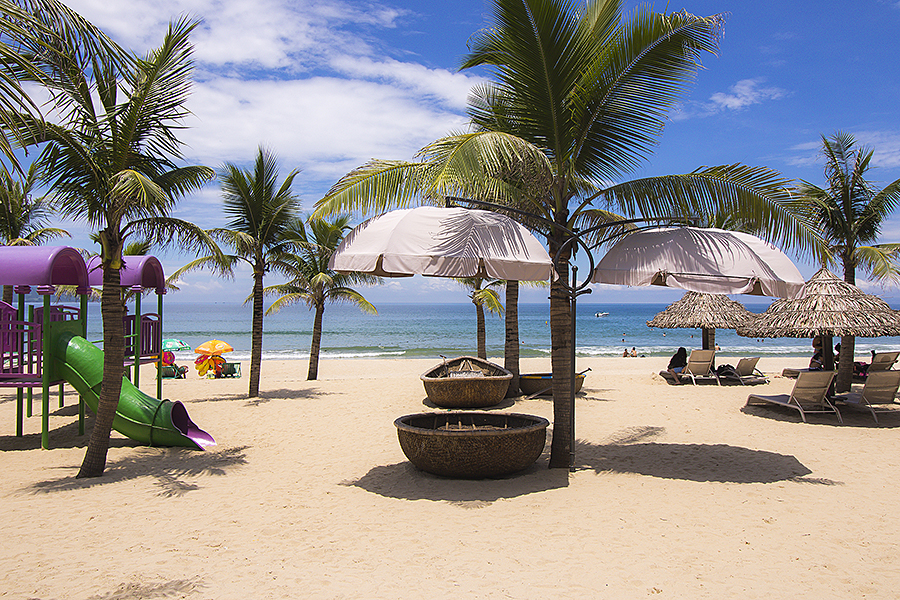
But it’s not just a place for beach lovers. Da Nang has much more to offer. There are beautiful waterfalls to explore outside of the city as well as the scenic Son Tra Peninsula with its sweeping views of the bay. For some family fun, try Ba Na Hills or Asia Park, two of the region’s biggest and most modern amusement parks. There is even a mysterious 5-mountain complex, called the Marble Mountains, where you can explore cave shrines and get a phenomenal view of the city
From Da Nang, you can also travel to Hue and Hoi An, two more cities that will charm you with their historical atmosphere and unique character.
Hoi An – A UNESCO World Heritage City
Easily explored in a day or two, Hoi An is an absolute must. Its small yellow houses, narrow roads, ancient temples, and countless beautifully decorated stores and coffee shops have earned it the status of “UNESCO World Heritage City” and make it one of the most picturesque places in Vietnam.
Wander the streets and discover the traditional houses of rich merchant families, buy some local art or even have a dress or suit tailored. To help you find the most unique items you will cherish long after you return home, we’ve put together a guide to shopping in Hoi An with all our favorite picks and best deals.
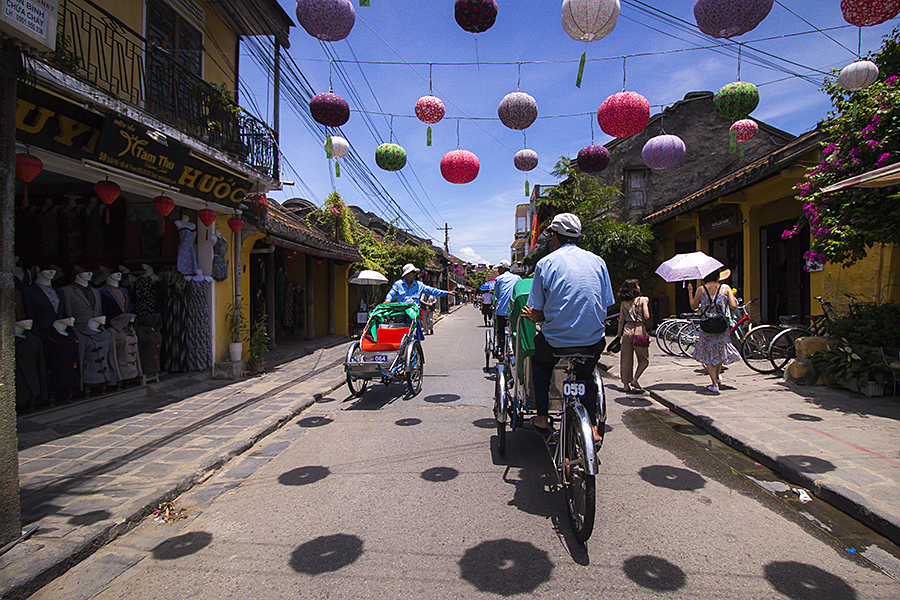
Got an extra day? The get out of the city and off the beaten track to check out the surroundings. The best way to do this is by bicycle or motorbike. If you’re not comfortable driving by yourself, you can go with a small group led by a professional guide. Tourists rarely take the time to do this, so it will be a special experience and you’ll get to see places others often miss.
Nha Trang – Vietnam’s Diving Center
Already well on the way to the southern part of the country, Nha Trang is another awesome beach destination in Vietnam. If you’ve come here to relax on sandy beaches and do plenty of water sports, this is where you should be spending your time. If you want to know where to dive, snorkel, jet ski, etc., read our guides to learn about the best diving schools and where to have a great time in and under the water.
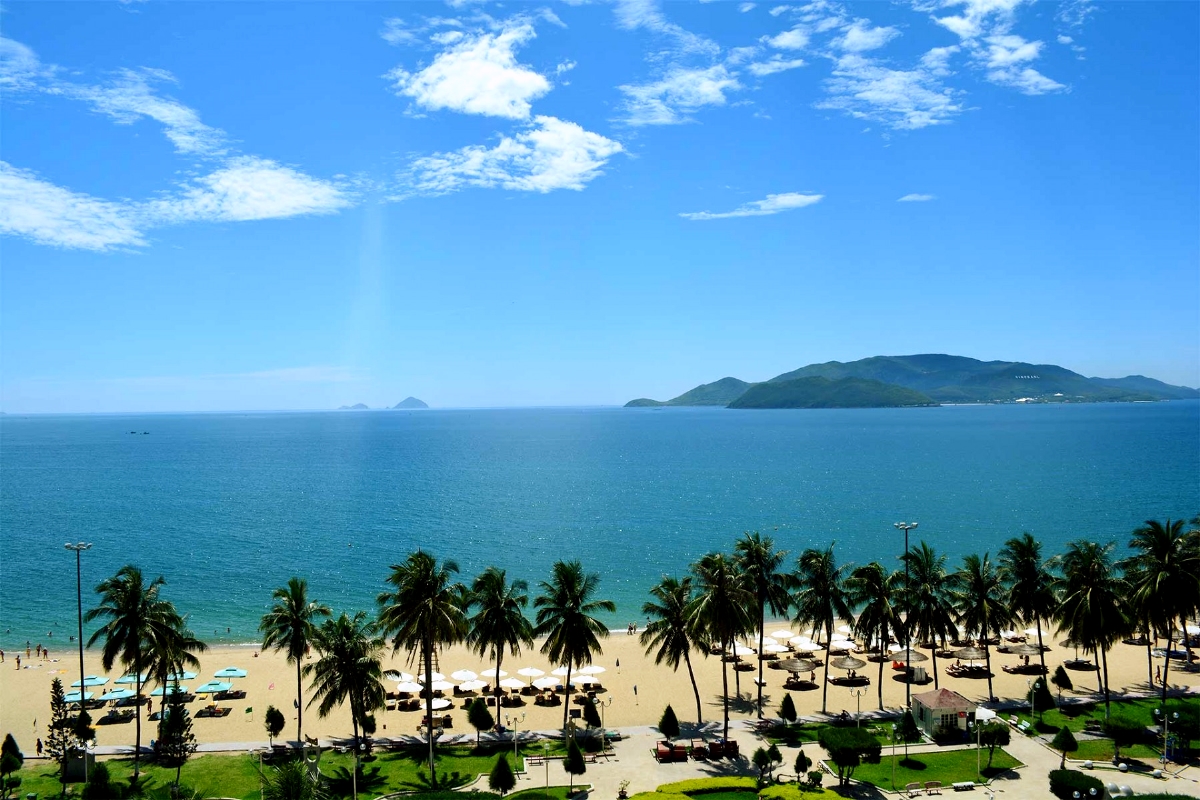
There are also plenty of other things to see and do in Nha Trang such as going to the city’s various museums and markets, enjoying a relaxing afternoon at the nearby hot springs and thermal baths or exploring some of the beautiful temples and pagodas. If you’re pressed for time, browse through this short itinerary for an idea of how to make the most of only one day in Nha Trang.
What to Eat in Central Vietnam
Vietnam’s central region is known for flavorful and sometimes even spicy food. Spices and herbs are abundant here and combined with a distinctly French influence, this makes for a unique type of cuisine.
When you’re traveling through this part of the country, make sure you don’t miss dishes like bun bo hue (the iconic soup containing rice vermicelli and beef), mi Quang (part noodle, part salad with an assortment of vegetables), cao lau (yet another noodle dish with pork and mixed greens,) and banh khoai (cake made from cassava, sugar, salt and coconut milk). Also, if you’re feeling snacky, look for a booth selling banh mi, a Vietnamese sandwich consisting of a baguette lined with pâté and onion oil, stuffed with pickled vegetables, some chili sauce, and plenty of coriander.
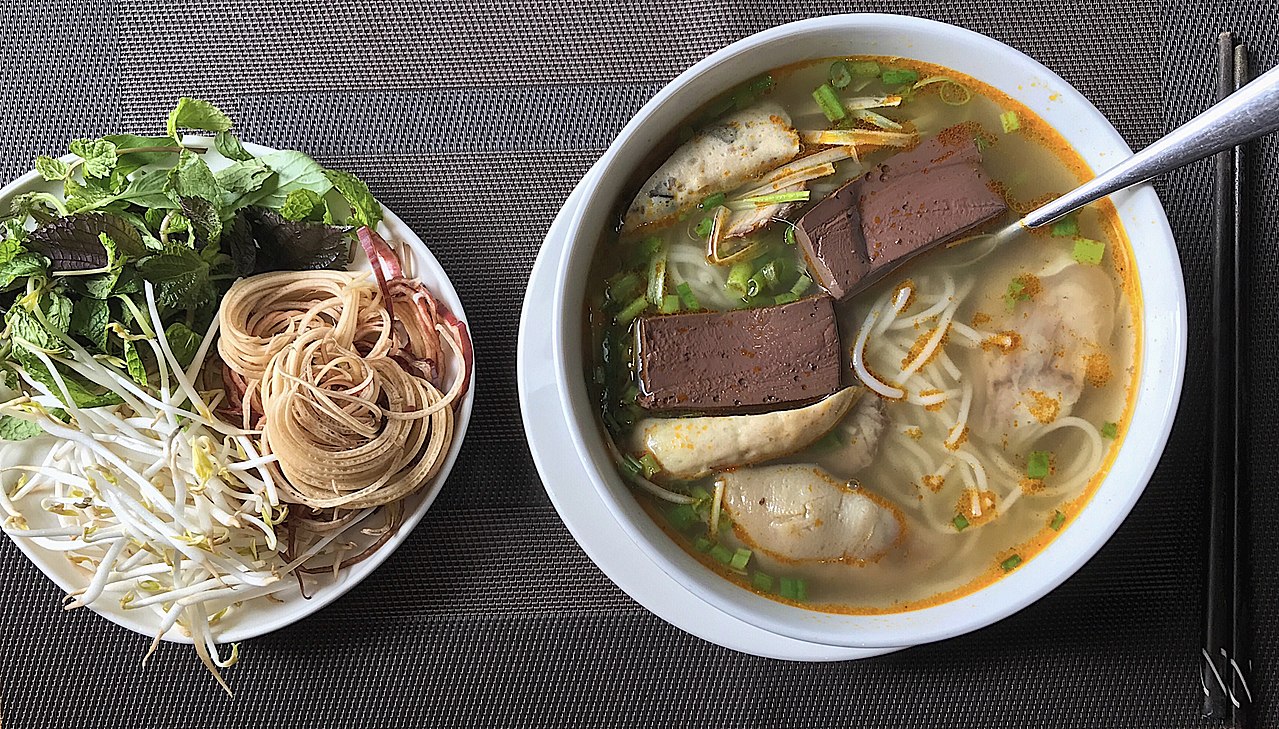
The South of Vietnam
Moving even further south, you will notice how the landscape becomes flattered and the weather changes yet again. When traveling to Ho Chi Minh City and the area around it, you only have two seasons to choose from: the dry season and rainy season. Both are warm and even during the rainy time, you will rarely be confronted with full days of showers but rather some regular heavy downpours.
While here there are slightly fewer ancient historic sights, you will find many interesting remnants of recent history including the French colonization and the Vietnam war. Get ready for one of the most interactive lessons in history and culture you’ve ever had!
Ho Chi Minh City – Vietnam’s Economic Capital
If Hanoi is the cultural capital of Vietnam, Ho Chi Minh City is the economic capital. It’s where most large foreign corporations have their offices and therefore where most expats live in Vietnam. This city’s vibe is generally known as open, laidback, and friendly with locals readily engaging with travelers and always eager to help.
Spend two or three days here and explore the War Remnants Museum and the Independence Palace, try local food street food, enjoy shopping at famous Ben Thanh market and go for a stroll along the river in the evening after having some drinks at one of the city’s popular craft beer bars. To find out where they are, read our article dedicated purely to this hugely important topic!
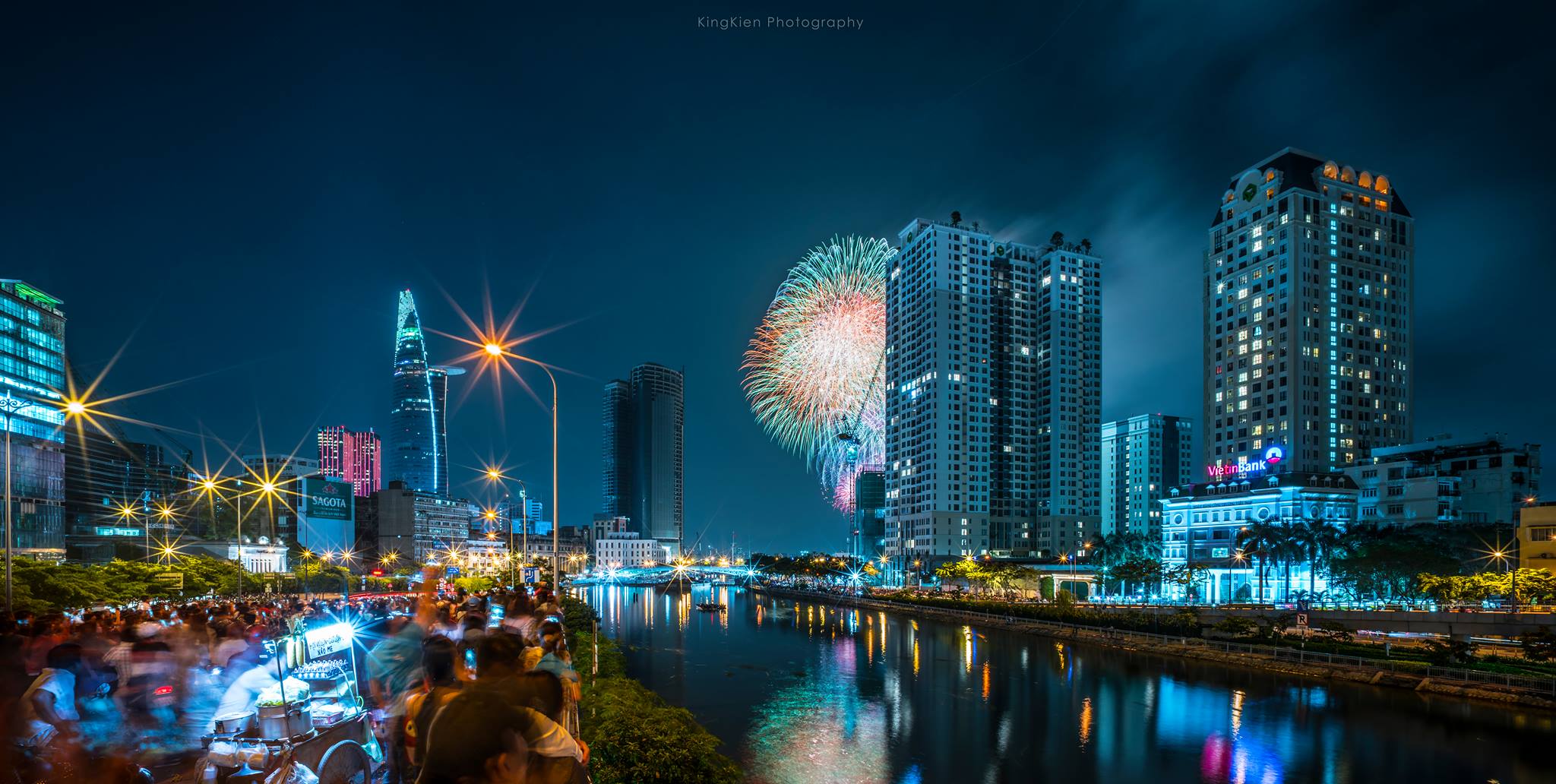
Once you’ve seen the city, take advantage of its convenient location to plan a few cool day trips to learn even more about Vietnam, its people, and their past.
Vung Tau – A Weekend Getaway
Got an extra day to spend while in Saigon? Then head out to Vung Tau and enjoy some time on the beach without the hustle and bustle of a noisy city. Since the authorities made a conscious effort to have beaches cleaned up and organized, it has become the perfect spot to spend a day relaxing in the sun and taking the occasional dip in the sea.
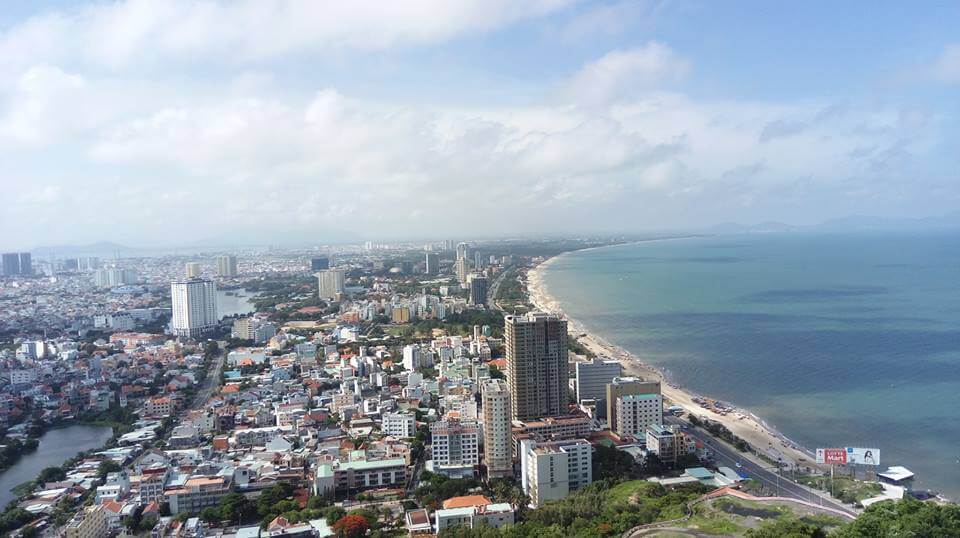
If you feel like tiring yourself out a bit first, there are some nice hills to climb which give you a wonderful view of the city and the ocean and will also help you work up an appetite for all the delicious seafood served up in Vung Tau. For some more tips on what to do and how to get there, we’ve put together a post with all the info you need to plan your trip.
Cu Chi Tunnels – Remnants of the Vietnam War
Only about 90 minutes from Ho Chi Minh City, the district of Cu Chi played an important part in the Vietnam War. Known for its endless network of underground tunnels used by Vietnamese fighters, this place is absolutely worth a visit. The exhibition center there gives visitors more information about what exactly the tunnels were used for and is a great place to better understand how the war was fought and what effects it had on the local population.
If you’re adventurous, you can even go down into the tunnels yourself and crawl through them. It’s an unforgettable experience, but not suitable for the claustrophobic.

Want to add Cu Chi to your itinerary? Then you’re in luck because we’ve written a post for you with all the details about how to get there and what to be aware of when you do.
Mekong Delta – Experiencing Traditional Vietnam
Located close enough to Ho Chi Minh City to be suitable for a weekend trip but far enough way to feel like you’re in a different world, the Mekong Delta is one of those places you have to visit to understand. While there are some large, busy towns, you can easily get a truly local experience by heading for a smaller village not overrun with tourists.
There you can find wonderful homestays where you’ll spend some quality time with locals, get to know them and their way of life, share meals with them and maybe even help to prepare them. There are many great places to stay that grow their own produce, are right by the river or offer tours of the area on the back of the family motorbike. The opportunities here are endless.
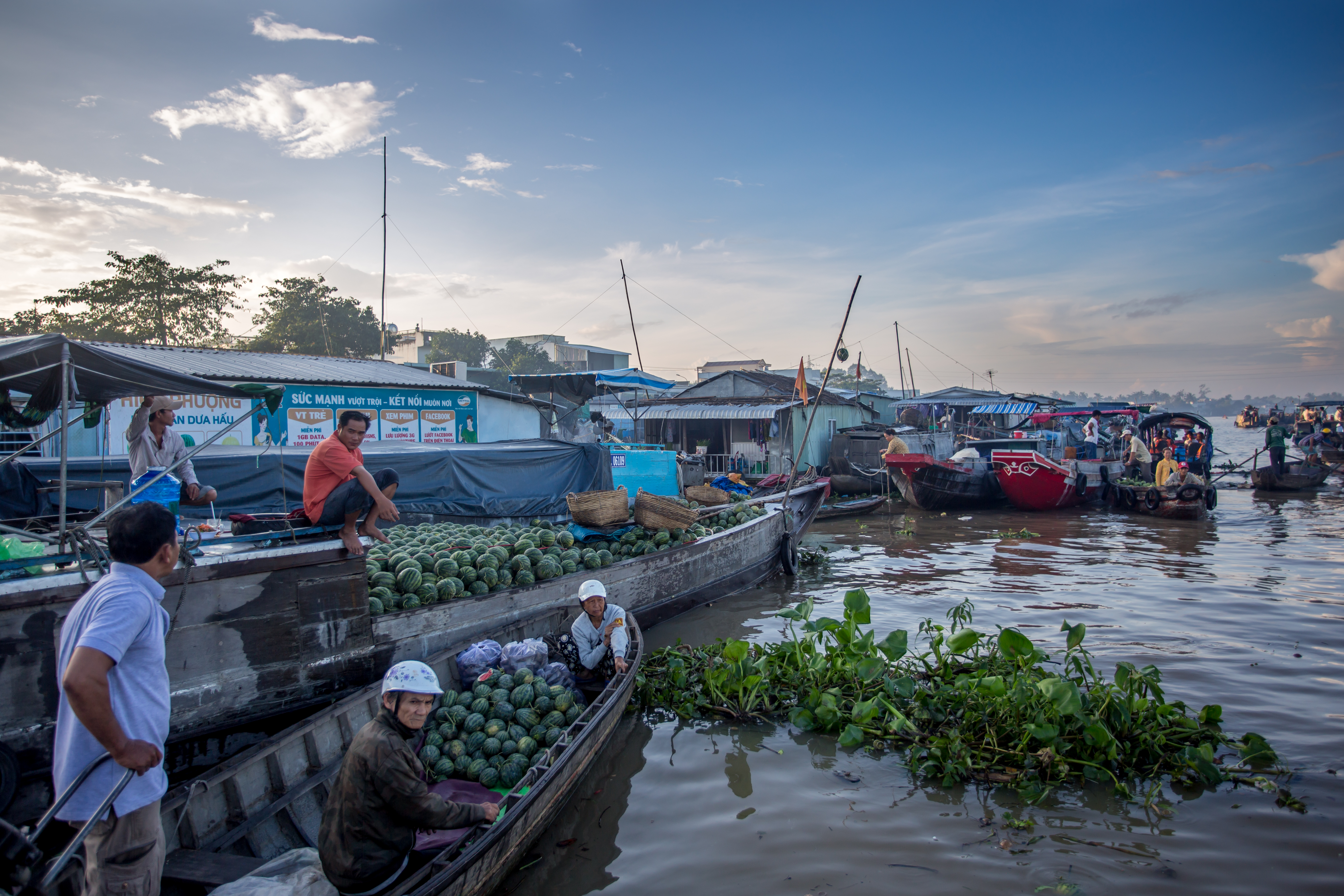
The Mekong Delta is also known for its great markets. Since there are so many and they are quite far apart, the best thing is to find out which ones you really want to visit so you can plan ahead and get your itinerary figured out.
Phu Quoc – An Island Retreat
Done with the cities and ready to chill? Then catch a flight or a ferry to Phu Quoc island! There, white sandy beaches and some delicious seafood treats await you. Get a scooter and explore the island or simply lay out in the sun and enjoy the sound of the soft waves coming to shore.
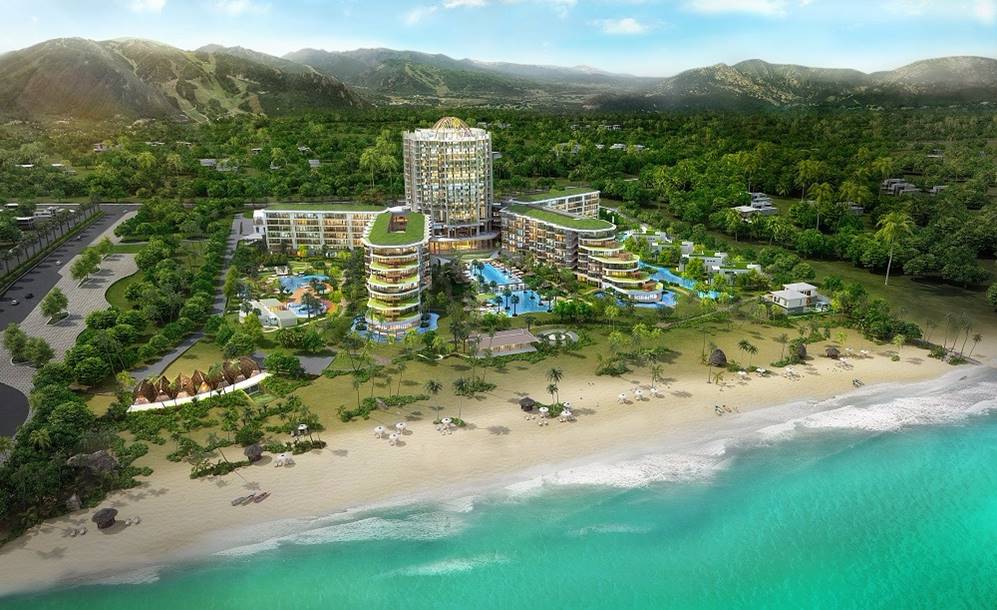
Be sure to try some of the local specialties which mainly consist of freshly barbecued shrimp or fish and grab a bag or two of pepper to take back home. Yes, pepper! The famous Phu Quoc pepper is grown all over the island and shipped to the rest of the country. If you like your food with a kick, this is the perfect ingredient to add.
What to Eat in South Vietnam
Food in southern Vietnam is decidedly sweeter than in the rest of the country. This is due to the influences of Thai and Cambodian cuisines which add coconut milk and sugar to many of their dishes. Popular meals include hu tieu (a noodle dish served with pork meat and intestines) as well as goi cuon, the light healthy summer rolls stuffed with vermicelli noodles and fresh herbs. Check this article for 10 best food to try in the Mekong Delta.
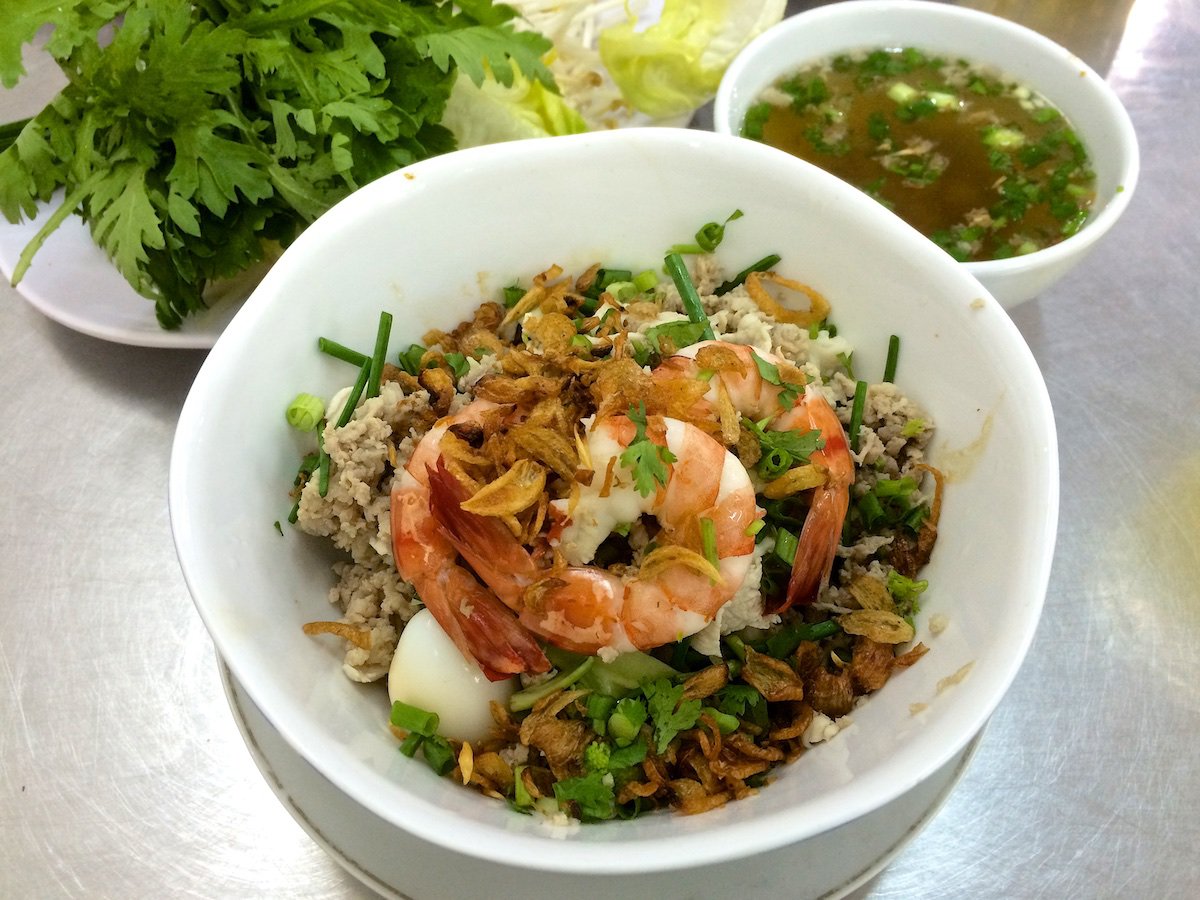
When you get to Ho Chi Minh City, you should also give pho another try. Down here its flavor is a lot more complex since it contains more herbs and an extra dash of hoisin and soy sauce. Which one do you like better? The balanced, light pho from the North or the rich, spicy one from the South?
The fact that Ho Chi Minh City is home to many international businesses and has always been a hub for foreigners living in Vietnam has also had an effect on the local food. Banh mi, for example, is served with egg here (banh mi op la), something that was started while the French was still in power in Vietnam.
